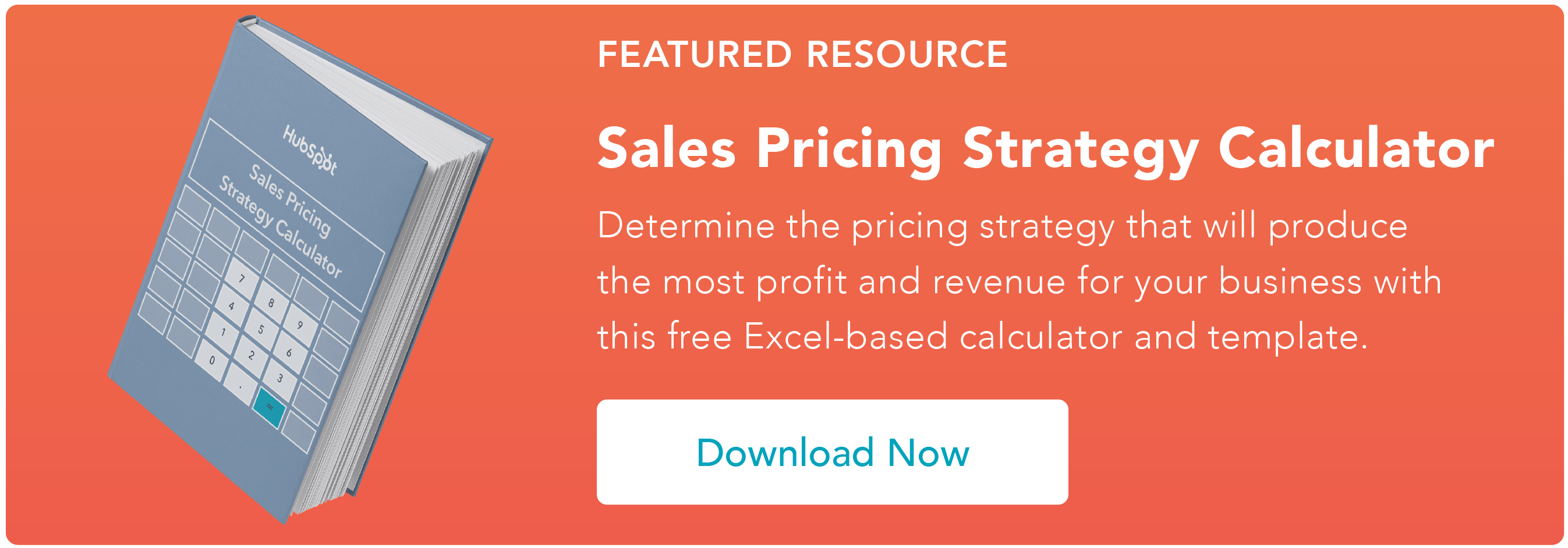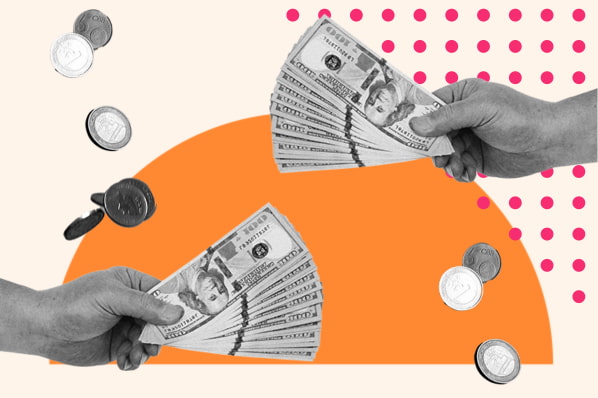What is a price proposal?
A price proposal is a contractor’s preliminary bid for the price for a potential customer’s job. It’s a document that identifies a single price the contractor will charge after calculating the potential costs they will incur as a result of completing the customer's project.
It’s important to bear in mind that a price proposal is not an estimate. An estimate is a rough, educated guess about how much a project would potentially cost a prospect. A price proposal is a detailed document containing accurate quotes for the price of raw materials, labor, taxes, and other general overhead.
It also features a contractor’s proposed markup and is often submitted in competition with other contractors vying for the same job.
Ideally, a price proposal is thorough and comprehensive in covering any potential costs that may arise throughout the course of completing the project. It should also strike a balance between value for the customer and financial feasibility for the contractor.
As a contractor, you want to be able to demonstrate every cost you detail in the proposal is valuable and relevant to your prospect’s needs. In some cases, you might have to offer a competitive deal or rely on an exceptional reputation to differentiate yourself from the competition.
At the same time, your price proposal still needs to be worth it for you. Don’t drastically undersell yourself for a contract that ultimately won’t be worth your time financially. Understand your customers’ budget and see if a potential contract is viable for you or your company.
How can I determine a fair price point?
When it comes to pricing products, you have a dozen ways to crunch the numbers. But depending on your industry, it may take some trial-and-error to land on the best strategy. Here are three common ways to gauge the right price.
1. Value-Based Pricing
One of the best ways to gauge your potential price point is through value-based pricing. It’s a pricing strategy used by businesses to price products and services at a rate that they believe consumers will be willing to pay. A value-based pricing model doesn’t just consider production costs with a fixed markup tacked on.
Getting a feel for that figure can be a difficult process. It takes customer analysis, competitive analysis, and market research to really nail down what you should be charging for a particular service.
For instance, say you represent a civil engineering firm vying for a contract to install a new septic system at a city park. You estimate the system will take ten days to install at a cost of $2,000 per day. How do you go about determining a price for your proposal? And how do you decide whether to take the job or not?
Based on prior outreach to previous customers to see how much they would pay for similar services, market research that speaks to how much new customers might pay for the same job, and competitive analysis to see what your competitors are charging, you determine your competitive value for this project is $25,000.
If a $5,000 profit is worth it to you, and you can demonstrate your services are worth $25,000 to your prospect, that’s the price you should lead with. Don’t be quick to rashly undercut that price in order to try to win business. That could come off as cheap and undermine your prospect's faith in or respect for what you have to offer.
Value-based selling may be a complicated process, but it’s the best way to determine a reasonable, effective price for your services. To learn more about it, check out this article.
2. Competitive Pricing
As the name suggests, competitive pricing involves setting prices relative to those of your competition. Once you know what they're charging, you can set lower, similar, or slightly higher prices in response.
If you opt to sell at a higher price than the competitors, make sure it can be justified in some way — whether that's with a money-back guarantee or a higher-quality product or service.
Let's look at an example. Suppose you're the owner of a local bike shop that sells a mountain bike for $600. You check the competitive landscape and discover the big-box retailers like Target and Walmart sell the same bike for 15% less. But this is to be expected — they have more purchasing power to buy at a greater volume.
Next, you check the specialty bike shop in your area. They sell the mountain bike for 15% more. However, after more research, you discover that they include a custom bike fitting with each sale, which is a service you don't provide. This justifies the price increase.
Lastly, you check the local bike shops that are of a similar size to yours. You find they price the mountain bike similarly. With this information, you can safely assume the price is fair in relation to your closest competitors.
Of course, competitive pricing has its drawbacks. Most notably, if you only focus on competing with the other players in your market, you may not cover production and overhead costs. This is why competitive pricing should be part of your strategy instead of the central focus.
3. Cost-Plus Pricing
Cost-plus pricing is one of the simplest ways to determine prices, and many businesses use it as their primary pricing strategy. It focuses on the cost of producing your goods or services (COGS).
With this method, apply a fixed percentage to your production or service cost when calculating prices. For example, let's say you sell wireless headphones. The headphones cost $50 to produce, and you want to make a $50 profit on each sale. Using the cost-plus pricing strategy, you would set a price of $100, which is a 100% markup.
Using the cost-plus pricing, you can guarantee that your operating and production costs are covered. It works well for businesses that sell physical products, or when the competition uses the same model. But it's not the best fit for service-based or SaaS companies whose products typically offer more value than the cost to produce them.
Another disadvantage is that it doesn't factor in the customer's willingness to pay or the perceived value of your products. These are two important influences to consider when setting prices.
Price Proposal Writing Strategies
1. Use the bundle pricing technique.
What's a McDonalds burger without fries and a drink? Or a phone without a data plan? These are examples of price bundling — and it's become so commonplace that we rarely notice.
Bundling pricing pairs two or more complementary products or services together and sells them for a single price. In other words, you sell more value in a single purchase than if each item in the bundle was purchased separately. It’s a smart way to upsell and cross-sell your offerings to benefit your customers and revenue goals.
If you want to try the bundling technique, ask yourself these questions first — do I have enough products/services to bundle? Would customers prefer to buy things separately? And do customers truly need all the bundled products?
Price bundling can seal the deal for many potential customers. But it requires some serious thought to execute — so consider whether your business is the right fit for this technique.
2. Present a benefit or solution.
Here's the problem with price proposals — they communicate the price, not the value. To get around this, try presenting benefits or solutions in your proposals.
Let's look at an example. Suppose you design websites. Instead of simply compiling a list of prices for your proposal, consider describing the benefit of each item. Take a look at it in action:
- Website design, $8,000
We'll strategically overhaul the content, structure, design, and navigation of your website. Then, we'll integrate an e-commerce shopping cart to your website to funnel your leads into sales.
- Logo, $3,000
We'll refresh your logo with a new design that not only compliments your overall brand aesthetic, but also appeals to your target audience.
This proposal does a great job conveying your value, expertise, and competency, which is far more appealing than a spreadsheet of numbers.
3. Offer multiple options or packages.
By listing only one pricing option in your proposal, potential clients may feel cornered into giving a yes or no answer. Instead, you can offer more flexibility by presenting multiple options or packages. The best way to do this is with tiered pricing.
Potential clients can weigh different tiers or packages, giving them more power and flexibility in the decision. But for it to work, the prices in your tiers should make sense from a value perspective— and potential clients should know exactly what to expect from each option.
For example, you may present clients with a value, standard, and premium package. The value package is enough to meet their minimum requirements. The standard package closely aligns with their budget and meets their goals. And finally, the premium package provides all the bells and whistles but extends beyond their budget.
To state the obvious, customers like choice. But it's also worth remembering that too much of it can have a negative effect. If you've ever been to a restaurant with a 10-page menu, you know what I mean. Try sticking with two or three options. Any more than that, and you run the risk of overwhelming the prospect.
Price Proposal Template
You can download this template to help guide you through the price proposal writing process here.
Though writing price proposals can be tedious, it's an essential part of being a contractor. Hopefully, with a better understanding of what these documents are and how to approach them, you can make the process of writing them smooth, efficient, and painless.
Editor's note: This post was originally published in January, 2020 and has been updated for comprehensiveness.
Pricing Strategy
.png?width=112&height=112&name=Image%20Hackathon%20%E2%80%93%20Vertical%20(45).png)

.png)









![Price Skimming: All You Need To Know [+ Pricing Calculator]](https://53.fs1.hubspotusercontent-na1.net/hubfs/53/price-skimming-strategy.jpg)

.jpg)